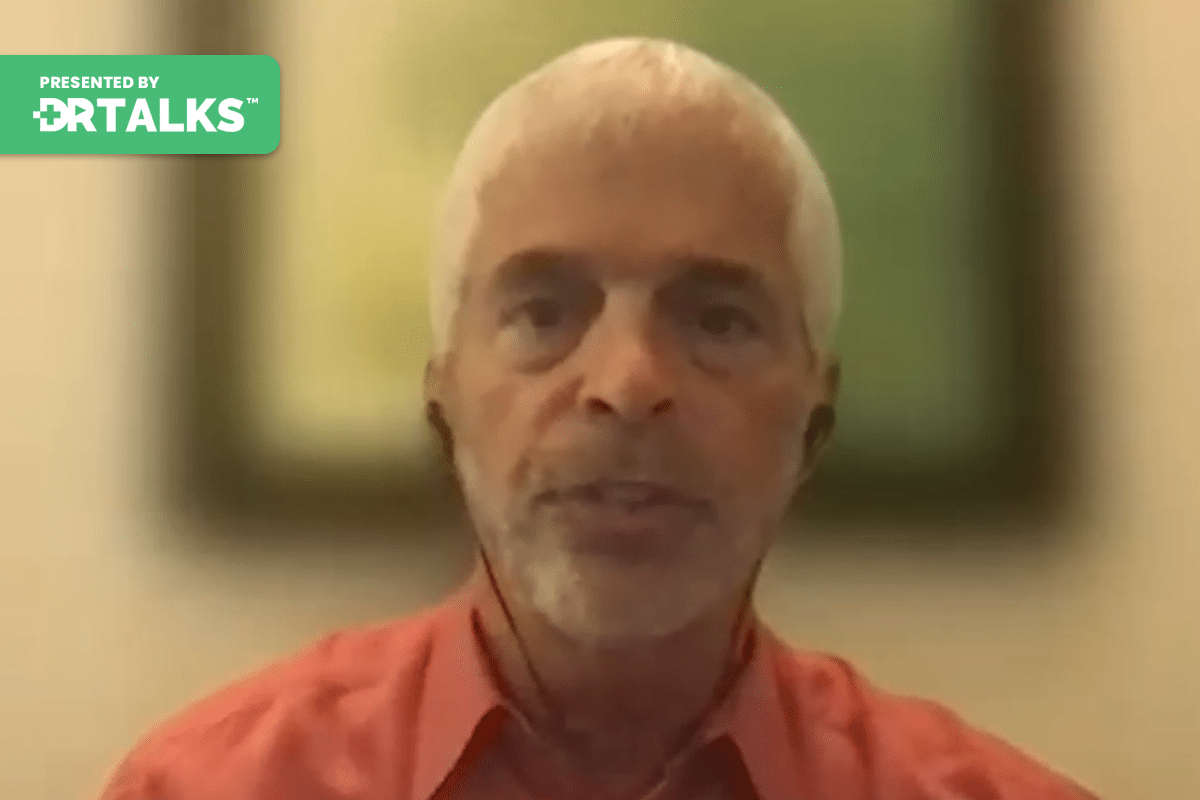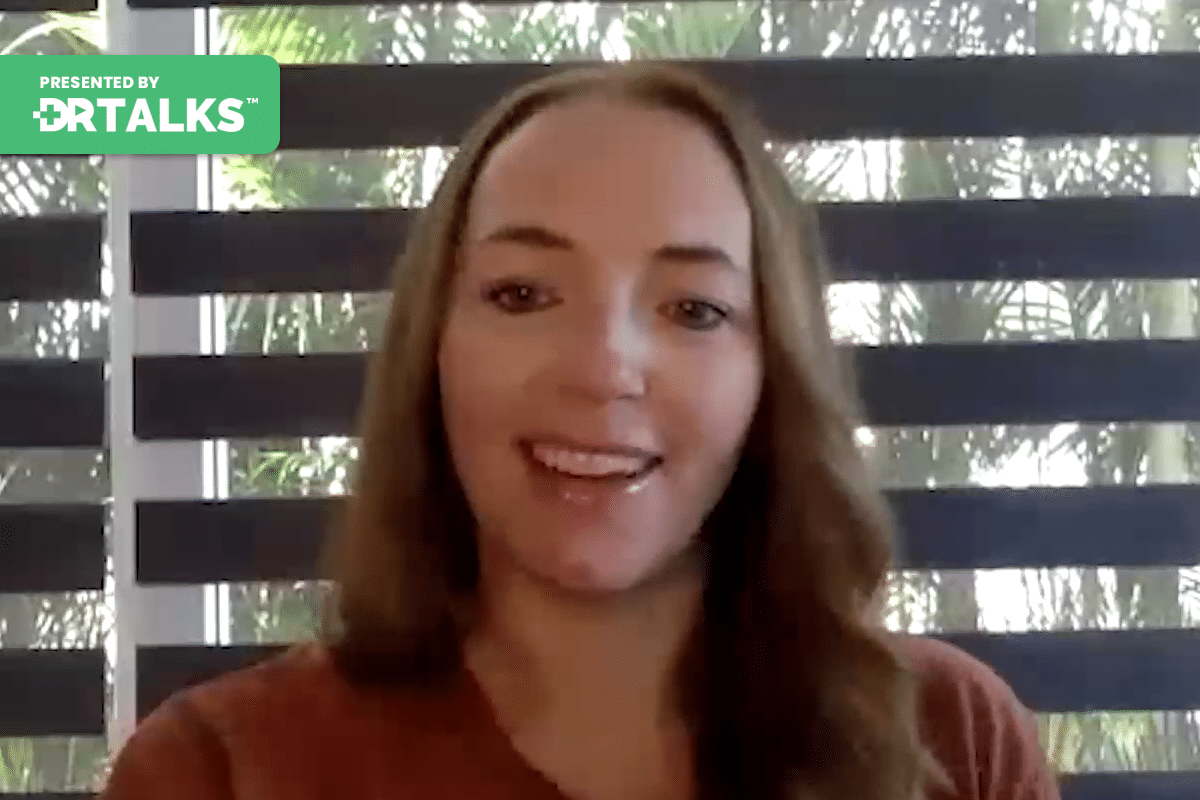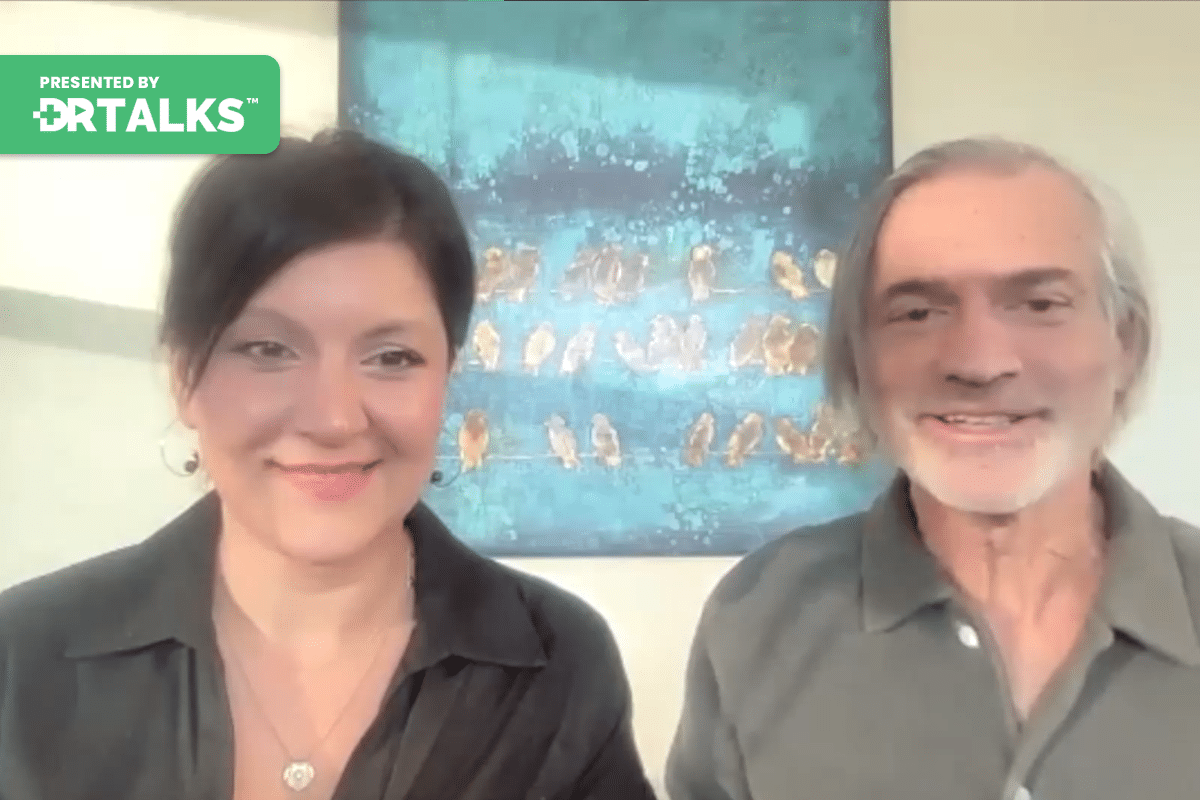Join the discussion below

Dr. Darin Ingels is a Licensed Naturopathic Doctor, Author, International Speaker, and leading authority on Lyme disease. He is a former Lyme patient who overcame his own 3-year battle with Lyme disease, after having failed conventional treatment and became progressively debilitated. Dr. Ingels found that proper diet, lifestyle management and... Read More

Dr. Nancy O’Hara is a board-certified Pediatrician. Prior to her medical career, Dr. O’Hara taught children with autism. She graduated with highest honors from Bryn Mawr College and as a member of the Alpha Omega Alpha Honor Society from the University of Pennsylvania School of Medicine. She earned a Master’s... Read More
- Learn how Lyme and PANS affects special needs children and what you can do about it
- Best ways to manage and control inflammation that make PANS worse
- Natural approaches to Lyme and PANS using botanical medicine
Related Topics
Antibiotics, Antibiotics Impact, Anxiety, Autism, Botanicals, Children, Childrens Health, Chronic Illness, Clinical Improvement, Controversy, Detoxification, Erythema Migrans, Erythema Multiforme, Gastrointestinal Symptoms, Gentle Approach, Gestational Transmission, Gut Disruption, Gut Flora, Herbals, Herbals Sensitivity, Herbs, Immune System Support, Inflammatory Support, Integrative Medicine, Low Dose, Lyme, Lyme Disease, Mitochondria, Mitochondrial Dysfunction, Neurodevelopmental Problems, Nutraceuticals, OCD, Pans, Patterns And Pandas, Pediatric Autoimmune Neuropsychiatric Disorder Associated With Strep, Pediatrician, Rashes, Reactions, Root Causes, Tics, Treatment ApproachDarin Ingels, ND
Hello everyone, and welcome back to this episode of The Healing from Lyme Disease Summit. My guest today is Dr. Nancy O’Hara, and I always love when I get to interview my friends and colleagues. And I’ve learned so much from Dr. O’Hara over the years. She’s a board certified pediatrician, expert in patterns and pandas and neurodevelopmental illnesses, things like autism, OCD. She’s been doing this for what I would say, many, many years and has a lot of experience. Dr. O’Hara, thank you so much for joining the summit.
Nancy O’Hara, MD
Thank you, Darin. Really pleasure to be here. And thank you for all that you do. I’ve learned a lot from you, too. So appreciate it.
Darin Ingels, ND
So, you know, you’re a pediatrician. You obviously work with a lot of kids. You know, maybe let’s talk a little bit first about Lyme in kids. You know, is there something different about children that we see in adults that, you know, parents who are watching this really need to maybe tune in to that, like, hey, you never really thought that this might be affecting my kid. Now, what are something that might be a little bit different with kids than we see in adults?
Nancy O’Hara, MD
Yeah. I mean, one of the things is they can present with Lyme, with gastrointestinal symptoms, with diarrhea, you know, 80% of children do not have the classic erythema multiforme, erythema migrans, other types of rashes. They just don’t have that. And as you know, children are resilient. So a lot of times they can get a tick bite. They’re running around. And we don’t even suspect that that bite has happened. They don’t really get sick as we might as an adult with an acute infection. So a more chronic presentation where it comes on many weeks later can happen. Or we think that initial presentation of fever, you know, is just another virus that they got. I think the other thing that I always want to remind parents of is Lyme can be transmitted just stationary. And so in the children with neurodevelopmental problems, we always ask about mom’s history and we always look to see if mom could have had Lyme disease even if she didn’t know it when she was pregnant. And if that could be transmitted on to the child and be part of their overall chronic illness or neurodevelopment and illness. So I think those are the ways it presents differently.
Darin Ingels, ND
Yeah. And I know, you know, you and I both work with a lot of children with autism, and there are so many features that often get chalked up to being autism. And I’d love to hear your experience. I mean, you know, my experience is that I see a lot of symptoms that get attributed being autism get better when we treat Lyme and these co-infections. I don’t think I’ve ever had a child with autism completely went away. But I think, you know, when kids start talking or have some of these behavioral issues, it’s amazing how many of these things get better when you treat Lyme. I mean, is that been your experience as well?
Nancy O’Hara, MD
Absolutely. Yeah. And I think that, you know, autism is always blamed for things. You know, it’s part of the allopathic name it, blame it, tame it kind of medicine. And autism is really about getting at the root causes. And for some of the children and I used to think it was a very small percentage. I think it’s a much greater percentage of that. But we really don’t know. But for some of them, it is Lyme disease. And I think the most important thing for moms thinking about getting pregnant is to first figure it out for themselves, because that’s when we can make the most impact. And I agree with you that treating Lyme can help these children with autism to get better. It’s all about timing, severity. All of that about how much better. But it’s something that should definitely be looked at.
Darin Ingels, ND
Yeah, I’m guesstimating on my practice. It feels like about 30% of kids I see on the spectrum have Lyme or some co-infection. Again, when we treat, we do see clinical improvement. And I was talking to our friend Dave DORNFELD, and I think he kind of felt it was about the same. So yeah, I mean, nobody really knows, but that seems to be the number that I’ve kind of hovered around.
Nancy O’Hara, MD
Yeah, I think that’s a fair ballpark.
Darin Ingels, ND
So what is your approach? You know, when you have a child come in and you’ve identified that they have Lyme either clinically or through lab tests. What’s your thought process of like, you know, where do I really need to start? And I know, I, I know acute Lyme disease is a little bit different, assuming that most of the people we see do not have acute Lyme disease. But for someone who might have had this for a while, or maybe this is a gestational transmission, you know, what’s your thought process of where do I need to start with this child?
Nancy O’Hara, MD
Yeah. And and, you know, as you said, I’ve been doing this for many years, actually, many decades at this point. But, you know, because I tend to have a longer waiting list, I don’t see anybody with Q disease. It’s all chronic disease. In the last 15 years of my practice has been really dedicated much more to spans. The pediatric abrupt onset neuropsychiatric syndrome and Lyme disease can be part of that. It can come on abruptly, but it certainly can be much more subacute and chronic also. And the most common that we see is bartonella as a co-infection. So I’m still always looking at the three pronged approach. You know, is there still a trigger that we need to get rid of? And because it’s chronic, I am a big believer in herbs. I really don’t like to use the antibiotics. I think we often make guts worse.
We can cause many more problems when we use multiple antibiotics as is needed in treating bartonella, for example, they have their place, but I’d much rather look at herbals either from Boomer’s protocol. Callaghan’s protocol be on balance, many different protocols or individualizing, as I like to do for each child. And then I look at this is an immune system problem. This is not just a spirited problem. The in chronic Lyme, the immune system has been affected. So what immune support do we need to give? What inflammatory support do we need to give? And then what are the biggest symptoms in that child that it’s causing? You know, if it’s bartonella, is it rage? Is it joint pains, muscle pains, heal pains? Is it Lyme in chronic fatigue, brain fog and treating that symptom again with nutraceuticals, botanicals, herbals long before medications that may help that child to get better.
Darin Ingels, ND
I couldn’t agree more and that’s been my approach. And look, antibiotics have their place, but I couldn’t agree more that the disruption to the gut and with all the research that’s come out about how important our gut flora is in modulating not just your immune system, but weight and metabolism, cardiovascular health, I mean, pretty much everything. And, you know, we put that at risk, you know, every time we give an antibiotic. And sometimes, again, it’s necessary, you know, we have to do that. But if we don’t have to do that, you know, why not try something that might be a more gentle first? And if it’s not giving you the desired result, you can always step up that ladder a little bit.
But you know, my experience, I mean, having treated thousands of Lyme patients and including a lot of children with herbs, they work incredibly well. And, you know, I’ve probably written, you know, ten prescriptions for antibiotics in almost 25 years. So. Yeah, and this idea that herbs aren’t as strong as antibiotics aren’t as effective, that usually comes from people who don’t know herbs, aren’t trained and don’t really use a lot of them. For those of us who do, you know, we see the value and the benefit and yet we also don’t run the risk of damaging the mitochondria, which a lot of antibiotics do, and particularly for kids with special needs. A lot of them, if not most of them, have, you know, some element of mitochondrial dysfunction. You know, we just throw gas on that fire and have the potential to make things so much worse.
Nancy O’Hara, MD
Yeah, excellent points. And the other thing I would say is you and I both agree low dose, whether it be low dose immunotherapy or low dose in general in starting helps to avoid the hurt timer or die off reaction. So the other advantage of starting with herbals is we can start very low. You mean their full dose may be 30 drops, but we can start with one drop and move up slowly. So to avoid severe reactions.
Darin Ingels, ND
Yeah. And I’m always amazed at the number of people who at one drop of one herb, you know, start to her start to get some sort of activity and sometimes it’s a good thing. So.
Nancy O’Hara, MD
Right.
Darin Ingels, ND
I totally.
Nancy O’Hara, MD
Agree.
Darin Ingels, ND
A little goes a long way. And, you know, if you’re someone again who maybe doesn’t have you know, you’ve got bad genetics, you know, you don’t detoxify very well. You probably find your sensitive to a lot of things. And so I like the less is more approach of you know, let’s go in with kid gloves, very low doses of everything. And it’s amazing how many people respond at those low doses. Well, I want to talk a little bit about, you know, one of your areas of expertize and that’s, you know, patterns and pandas. You wrote a book called Demystifying Patterns. And for those who are maybe new to this concept, can you just describe a little bit about what this syndrome is?
Nancy O’Hara, MD
Sure. In the 1992, Swedish and others coined the phrase pandas pediatric autoimmune neuropsychiatric disorder associated with strep. And these were children that developed abrupt onset of neuropsychiatric symptoms like tics, OCD, anxiety after a strep infection. It remained very controversial. And I think Sue herself would say today she wished she had called it the Swedish disease rather than pandas, as many men might have done. Present company excluded, but, you know, and made it less controversial. But in 2012, the white paper came out where doctors Guido and 30 other clinicians and researchers got together to try to make it less controversial and coined the phrase pediatric acute onset neuropsychiatric syndrome. And this was to include other triggers, mold, metabolic problems, mycoplasma, Lyme viruses that could also trigger OCD or severe restrictive eating disorders and had two other things with it. So separation anxiety, you know, your 11 year old who all of a sudden won’t go to sleep or go to school without, you know, won’t leave your side.
Emotional lability or an abrupt onset of depression, irritability, aggression, as I said, rage with with bartonella behavioral regression, where all of a sudden they’re talking baby talk, the abrupt onset of ADHD or other school performance problems, tics, handwriting deterioration. And then the two other ones that are really passive, demonic, or is one of those together with a somatic symptom like restless sleep or bedwetting when they were previously dry or urinary frequency or other symptoms. And so if it’s really a very prescribed diagnostic criteria, and I think one of the problems we have is we have coined very, you know, cutesy, catchy kind of phrases. And the other problem is we don’t stick to the strict criteria. So when I talk about it, there are a lot of children with autoimmune encephalitis, many with Lyme disease, many with mold disease. If it’s not abrupt onset, it probably shouldn’t be coined as patterns. But that doesn’t mean it can’t be treated in the same way. Treating with the three pronged approach of antimicrobials anti-inflammatory urges and symptom treatment. And from my perspective, that’s a functional medicine approach to it.
Darin Ingels, ND
So yeah, can you talk a little bit about some of the immune mechanisms involved in Pans? I know it’s it’s kind of, you know, nerdy, geeky stuff, but I think it’s really kind of fascinating. And I know you talk about this in your book, but can you just help people who might be interested in that, you know, kind of understand what these mechanisms are?
Nancy O’Hara, MD
Yeah, absolutely. I think that it’s sometimes easier to understand it from the panda’s strep infection standpoint. But think about it like if you get strep throat, what should happen in your body is these antibodies or immune proteins should attack this strep in your throat and help you get through the disease. But instead, in a percentage of children, one in 200 where the immune system is dysfunctional, those cytokines, immune modulators, antibodies, instead of attacking the strep in the throat, instead have molecular mimicry where they attack a part of the brain. And specifically that’s the basal ganglia. So sometimes it’s the first expression, sometimes it’s repeated exposure to Group A strep, and that results in these pro-inflammatory cytokines like age 17 to age one, all of these sort of things attacking the microglia or the that part of the brain that releases inflammatory cytokines.
And these cytokines also break down the blood brain barrier. So you get an infection in your throat or in your sinuses. The blood brain barrier is attacked or broken down. And then there’s molecules like antibodies that easily get into the brain and cause the inflammation. And so when that inflammation occurs in those specific areas, there’s anxiety, it’s in the amygdala, there’s ticks if it’s in that area of the state. But then there’s OCD. And that’s really what’s leading to the symptoms. We can go in and do a brain biopsy when we want to, but that’s what’s happening on a very microscopic level that then produces the symptoms that we see.
Darin Ingels, ND
I’ve always thought was so fascinating with strep and of course, strep, just one example of many microbes that are part of us. You know, I think this idea that, again, it’s a foreign thing like Lyme, you know, potentially that shouldn’t be there. Although I might argue that Lyme is probably a more common organism than people realize. And again it’s just a function of the immune system, just not understanding, you know, what’s part of our world and our part of our world. But this idea, again, that we’re going to kill our way out of this problem if it’s part of you, it’s just not going to happen. Right. So we’ve got to step beyond this idea that it’s, again, just about killing Lyme. It’s just about killing strep. It’s just about killing the bug. And we’ve got to evolve to realize that there’s all these other underlying issues that we need to address. And we’ve talked so much in the summit. I mean, Dr. Moorcroft and I talked about this. I talked about this with Dr. Antoine.
You know, it’s really about the terrain that, you know, we’ve got to get healthy, you know, getting a healthy God, getting rid of your toxicity, getting all getting out of the moldy environment. You know, right now I’m in a temporary office because we had mold on our own office and we had to get out. It’s like it’s a huge problem all over the world. So as you know, as certainly parents of children, that if you yourself are dealing with Lyme and Coinfection, again, I think you need to think a little bit broader on the approach. So, you know, you talk about this three pronged process with pans, antimicrobials. Let’s talk just a little bit. I want to hear, you know, you kind of rattled off some of the IRBs that, you know, you and I both use. But maybe let’s talk about some specific herbs for people so they can kind of think about it. You know, do you have particular maybe like your top three or four herbs that you tend to use quite a bit of?
Nancy O’Hara, MD
Yeah. So with Borrelia and Bartonella, I love Japanese knotweed. Japanese knotweed is a wonderful herb naturally with resveratrol, which is a wonderful antioxidant that helps with inflammation and but Japanese knotweed is probably my go to when I’m thinking about Borrelia and Bartonella. I also really like trip to Lepus, great for Mycoplasma, great for Babesia has some effects in Bartonella also. So those two I really think about a lot. I also tend to use a lot of mushrooms cordyceps for example, in supporting the immune system. So when I’m thinking about strep, I love herbals like Neem used to be a tioga, which is a pine needle extract from the Siberian forest. Silver colloidal silver can be very good. Also good against mycoplasma. Another one I like is Isaias and I. Maybe I’m not a great pronouncer. You never want to go to me for the pronunciation of anything. So if you want to pronounce it differently, please tell me, Daryn. But. But I love that for mycoplasma, which is often very hard to treat as well as for Bartonella in we’ve had great success with that one in some of our chronically deteriorated mycoplasma asthma kids. So those are some of the herbs.
There are many others I use, you know, when you’re talking about the gut, you know, one of my mentors would remain mentors is Dr. Sidney Baker and said, you know, really taught me a lot about yeast. And when we talk about the gut, a lot of these kids that come to us on multiple antibiotics have dysbiosis and often have yeast overgrowth. So I’m also if I’ve got a kid with yeast overgrowth that I’m also thinking about strep or mycoplasma, I may well consider oil of oregano. Grapefruit seed extract is another great one in Borrelia as well as yeast. Capra Like acid and multi products also that may have many herbs. So, you know, I would love to give one or two to all the parents out there, but for me it’s about looking at the child in front of me. And sometimes, you know, as I train new naturopaths or nurse practitioners or allopathic students, you know, they say, well, witcher, you know, I want to use this one. Did you use that one last time? And I’m like, I just get a gut feeling it’s going to be this one. And, you know, I and I say pun intended, you know, this is I’m going with my gut. Let’s treat this one for this gut.
Darin Ingels, ND
So well, the one thing that’s really cool about herbs is that they do so many different things. You know, herbs are comprised of numerous chemicals, constituents that, you know, they might have some that target, you know, helping eradicate the bug. But again, they’re anti-inflammatory. They help promote better circulation. They help support parts of the immune system. So we really can mix and match to find the right combination for each person. And if you guys are interested, Dr. Zhang is a researcher at Johns Hopkins. He and our friend Jacob Leoni have done a lot of research on different herbs and how they affect Borrelia and bees and Bartonella. And it’s kind of interesting, like the ones you mentioned, Japanese knotweed, Krypto Lepus Chinese skullcap, Artemisia, they come up kind of over and over. And I was at an event with Dr. Cowden, Lee Cowden, who’s worked a lot with Neutra Maddox on their products. And I remember giving a lecture and he talked about these earth being keepers. He goes, That’s a keeper, that’s a keeper. And I’m like, What do you mean? He goes, Well, it kills everything except people.
Nancy O’Hara, MD
You know.
Darin Ingels, ND
A lot of these herbs, again, they’re not just antibacterial, they’re antiviral, they’re antifungal. So I find I really never have to give an antifungal when I give herbs, because the herbs themselves are antifungal, they help keep that. You know, it’s not killing off just bacteria that allows the yeast to overgrow. So again, I think it has a better effect on the gut of not being that selective, but it’s selective enough that it targets the bad bug that we’re trying to get rid of. And just to add to your list, I’m a big fan of Cas Claw. Use a lot of crap, so in my practice I use a lot of Artemisia is a lot of her tuna. Yeah, I use a lot of Andrew Gravis. So yeah, I mean there really is a smorgasbord of herbs and that’s when I sit down with patients. I said, Look, you know, we’ve got plan A, B, C, D, E, F, if we need it. We just need a place to start. And so, you know, the one thing I think that happens too often in Lyme and really pans treatment is, you know, we want quick results and there’s that kneejerk reaction. If I don’t see it within two weeks, three weeks, you know, let’s bail and go on to something else. And in my practice, I give everything two months again, two months is a fair shake to say it’s moving the needle in the right direction. I know other doctors, it’s a little shorter, a little longer, but, you know, you do have to give it time to do what you want it to do.
Nancy O’Hara, MD
And I think, you know, several wonderful points you brought up on that. The first one being the the verbiage I use is this is a marathon, not a sprint. Don’t think because you’ve walked in this door that your child’s going to be better tomorrow. And I think setting those expectations, you know, saying to somebody who has a seven year old that it may be gestational you know, this may have been developing for seven years, let alone, you know, you’re not going to come in here and see it better in seven days. So setting those expectations are so important. And I also agree with you, you know, two months is reasonable. Sometimes it’s one month, sometimes it’s three months. I usually say three months because if they’re better at too, great. But you know, and I may change it before that time, depending on the individual child.
But if I set that expectation of a little bit longer, then they’re happier when things get better sooner or happier when I change it up a little bit sooner, if I feel differently about it. And then the third thing is with the herbals, you’re absolutely right. Multi-factorial, many different benefits, both in the numbers of germs and the antioxidant anti-inflammatory components. And I also like it together with a biofilm buster. If they’re not getting better initially, you know, again, if it’s chronic, adding in an enzyme 15 to 20 minutes, sometimes up to 30 minutes before the IRB gives that extra benefit, that may help to open this up and get them better. And it works much better with herbals in the biofilm protocol than it does with antibiotics.
Darin Ingels, ND
Well, another plug for herbals, which I think is interesting. Again, you know, almost all the research is in vitro. They don’t really do human studies because there’s just no money behind it. But at least in vitro, we do find that most herbs will kill Lyme in particular, and even Bartonella in the barn. It doesn’t change worms like Lyme does, but we know like doxycycline only addresses Lyme when it’s in it’s adult kind of uncoiled, you know, spirited form when it bawls itself up into its round body form, it doesn’t do anything where herbs do. They actually do kill it. So it doesn’t matter what stage Lyme is in, herbs still have an opportunity to get rid of the bug where we know some of the doxycyclin you know doesn’t. And doxycycline only works when the bug is replicating.
Nancy O’Hara, MD
Right?
Darin Ingels, ND
Right. It’s not it’s not a bacterial antibiotic, it’s bacteria static, it just stops it from replicating. So it still depends on your immune system’s ability to, you know, contain it and eventually eradicate it. So one more food for thought of, you know, why herbs, I think, are a great thing. Your second prong is dealing with inflammation, of course, with pans, pandas, this is the big problem. It’s a brain on fire, you know, what are your thoughts again on, you know, how do we control inflammation? Do we need to go right to the steroids and then NSAIDs, or are there other options?
Nancy O’Hara, MD
Yeah, many other options. So, you know, I’m not anti incense often giving ten milligrams per kilogram of ibuprofen when a child is in a flare, when a child is having a tantrum or having a horrible reaction with tics, etc., I can prove that that behavior here is inflammatory and can help to decrease the symptoms in the in the immediacy of the moment. But there are so many other things to try before steroids or IVIG. You know, you’re the expert on low dose immunotherapy. I will let you speak to that and we’ll want well, we’ll try to give my numbers of success. But others that I love are certainly turmeric, you know, curcumin in many different forms. You mentioned nutri medics with Dr. Kalb. Calvin, one of the new traumatic products I love is Avaya, which is a wonderful bioavailable form of generic others. As I mentioned, the antioxidants like resveratrol, things that elicit song talked about like specialized pro resolving mediators with COVID have been very, very helpful. Flavonoids like quercetin that the theory talks about a lot have been wonderful. Low dose naltrexone that’s used in mice and other diseases have been very helpful to some of the kids. And then one of course that Sid talked to me about and, and Harvest in his own lab are our Hellmann therapy.
The Fdcs the Hyman Aleppo stimulator system, turquoise. I’m not spelling that for your listeners but you know that’s going back to what are we trying to do we are trying to develop immune tolerance, immune resiliency and starting with the gut. So each of these things in different ways helps to raise set that gut where our immune system starts, 70% of the immune system starts in the gut. And so we have to work on that. And one more thing not to go on and on is it starts with diet. You know, if all we’re eating is junk, you know, rather than real food, sugars, carbohydrates, processed foods, our guts are not going to get better. So, you know, I do try to talk about the gut a lot, you know, in diet a lot. I’ve been coined the diet doctor by some of my patients because no matter who they are, I don’t let them get out the door without one simple change. You know, maybe taking the diet dairy away, maybe trying to replace a lot of the complex carbs with something else, maybe trying to add more protein or more oils or something. They could start them on the path of improving their immune tolerance and then moving on to all these other anti-inflammatories.
Darin Ingels, ND
Well, again, you know, we’ve got so many different tools in our tool bag that we can use to control inflammation. And a great I mean, there are times where kids are so out of control that sometimes you need the ibuprofen, sometimes you need the steroids. And again, we have a lot of kids. Where it helps is that the end of the saga? No, but if you’ve got a child that’s hurting themselves, hurting you at risk of, you know, running out in the middle of the street and doing something that might be very dangerous, you know, you’ve got to fight fire with fire. And sometimes these other things we’re working on take time to really get that inflammation under control. So don’t be shy. If it gets that state of using heroic medicine, that’s what it’s there for. But it’s with the understanding that that’s a stopgap treatment and that we continue our work and doing all these other things that you describe.
Nancy O’Hara, MD
Exactly. Yeah. And a couple other points about steroids. You’re absolutely right. It’s a temporary fix. They you know, and something to be used when they’re in dire straits. Absolutely. But if, like we were talking about before, they’re yeasty or have dysbiosis. Those are kids. They can definitely get worse rather than better. So we can be a diagnostic trial. Also, if you’re not sure what’s going on for a child, if they get better, inflammation is absolutely part of it. If they get worse, we should be looking more at other forms of dysbiosis that may be causing problems that we might not have thought about before so.
Darin Ingels, ND
Now could not agree more. Well, third point is about helping support the immune system. So what are your some of your favorite ways to help support the immune system?
Nancy O’Hara, MD
Well, you know, all of the ways we just talked about in supporting the immune system diet, first and foremost, curcumin, resveratrol, etc.. But I think the third one is also treating the symptoms. You know, that that are there. And with OCD, one of my favorites is NAC and acetyl cysteine is very helpful. I think the biggest problems are NAC is easily oxidized when exposed to air. And so putting each daily dose in and also getting up to a high enough dose a lot of times whether it be a nice at all, which is another great one for a CD NAC, we don’t go to a high enough dose treating the symptoms. If it’s ticks, magnesium may be great and that can be also wonderful if they also have constipation or trouble sleeping, if they have anxiety or under stress. I’m a big believer in adaptogens ashwagandha rhodiola holy basil. You know all of those can be very helpful. The big believer in CBD, which as you said, can be great for immune support and also wonderful in decreasing anxiety that Avaya we mentioned, great for immune support, but also great in calming the nervous system and bringing down the anxiety. I’ve used that as often as every hour in the acute situation to bring down the anxiety or symptoms that the child may be expressing. So a lot of these interventions, again, when we talk about herbals and nutraceuticals, they have two sides to them. And they’re not just, you know, treating the germ or treating the inflammation. It’s also about treating the symptom.
Darin Ingels, ND
Yeah. Well, again, there’s so many natural things that we can use to mitigate each of these different symptoms. Like I said, the anxiety and the tics, the sleep problems. And again, sometimes you do have to cycle through different treatments to find out what works best. I mean, again, in the herbal world, we have a lot of great herbs that we call nerve iron, so they basically help calm the nervous system down. But the nice thing about them is that they’re not generally sedative. So we don’t necessarily want to turn, you know, your child into a zombie where they are just lethargic all day and they’re not functioning. But we’ve got herbs like Passionflower and Lemon Balm, chamomile kava in California. Poppy, you know, again, yeah, there’s a lot of them and a lot of them come as glisser a tincture. So for kids that might be sensitive to alcohol that are in a lot of our tinctures, there’s a lot of companies that make them as well as sorts. So they’re sweet flavored like the Passionflower glycerin. It’s delicious. It actually.
Nancy O’Hara, MD
It is. So the lemon bottle is.
Darin Ingels, ND
Yes, super easy. So there are some herbs like Valerian that are pretty nasty. It’s hard to get Valerian as a tincture, but yeah, lemon Balm and Passionflower. And again, a lot of these are pretty easy to get into kids. They tolerate it quite well. And again, clinically, they they work very well.
Nancy O’Hara, MD
Yeah, absolutely. And when you talk about something like Lemon Balm, again, not just a nerve, fine, but also a wonderful antiviral. And in this era of COVID, but also in this era of many other viruses rearing their ugly heads in in virulent forms this season, whether it be RSV or norovirus or or others, you know, viruses are a big trigger in our kids that may have Lyme in the background or strep in the background, the viruses or what bring about the flare. So I’m always looking at things that may help us decrease the viral load or the viral replication as well as treat the underlying symptoms.
Darin Ingels, ND
Well, I don’t think any talk with pans will be complete if we don’t least talk a little bit about IVIG. And I know that you’re not using really a lot of it in your practice much anymore, but can we at least talk a little bit about what it is and why might this be helpful for someone dealing with pounds?
Nancy O’Hara, MD
Right. IVIG is intravenous gamma globulin. And so again, we’re saying there’s an immune system abnormality. So we give immunoglobulins to reset that immune system. And in kids with moderate to severe symptoms, especially when it involves restrictive eating or when it interferes with activities of daily living, then we may well need to quickly or if they’re not getting better over time with other interventions. Add something like IVIG. I work with immunologists to do it. We don’t do it within our practice. It is very expensive and these days harder and harder to get insurance to cover. But in children with pins or pandas of a moderate to severe nature, it can be very helpful. One caveat if you use IVIG too early in our children that also have Bartonella or Lyme before treating those, they may actually get worse. So we always look for Borrelia, Bartonella, Babesia, and others as warranted prior to recommending or instituting IVIG. Because we want to at least initiate the treatment for those before starting IVIG.
Darin Ingels, ND
Great idea. I agree. It’s like, you know, for me, IVIG is kind of a last resort therapy. You know, it is the human blood product. And as you know, as much as we test every blood product, there is still some potential risk. So, again, it’s in the toolbox for me, it’s in the back of the toolbox but.
Nancy O’Hara, MD
Just need to.
Darin Ingels, ND
It’s available because he and I have some kids and you do that. They’ve tried a lot other things, haven’t had a lot of success. And then sometimes this is the thing that really moves the needle. So it’s just good to keep an open mind that it’s a possibility. But I think, you know, if you deal with all these things that we just talked about, you’ll probably find the need for IVIG is way down.
Nancy O’Hara, MD
Yeah, I totally agree.
Darin Ingels, ND
Well, this has been a fantastic conversation. You’ve learned a lot. You shared some great information for people who might be interested in wanting to connect with you or your clinic. What’s the best way for folks to find you?
Nancy O’Hara, MD
Yeah, my website is DROHara.com. I since I’ve written the book which is available on Amazon, I’ve also been on social media. Glad to always see you there. Derek Instagram. It’s an H. O’Hara, M.D.. LinkedIn and Facebook. It’s Nancy O’Hara, M.D., MPH of AARP. ET cetera. You’ll find me, but I have several wonderful colleagues in my practice, Dr. Lindsay Wells and Dr. Erica Smith, who are great naturopaths, and Vicki Kobliner, who’s a wonderful dietician, all of whom you can find via my website also. And we’re just there to help anybody that needs it so well.
Darin Ingels, ND
Again, I appreciate you taking time to spend with us and being part of the summit. So thanks, Nancy.
Nancy O’Hara, MD
Thanks, Darin. Really appreciate it.
Downloads










